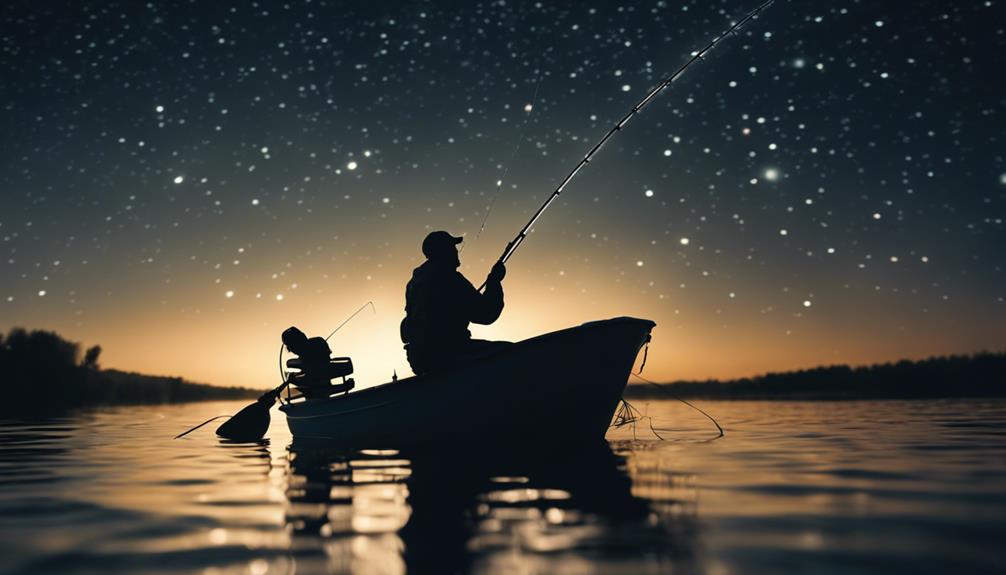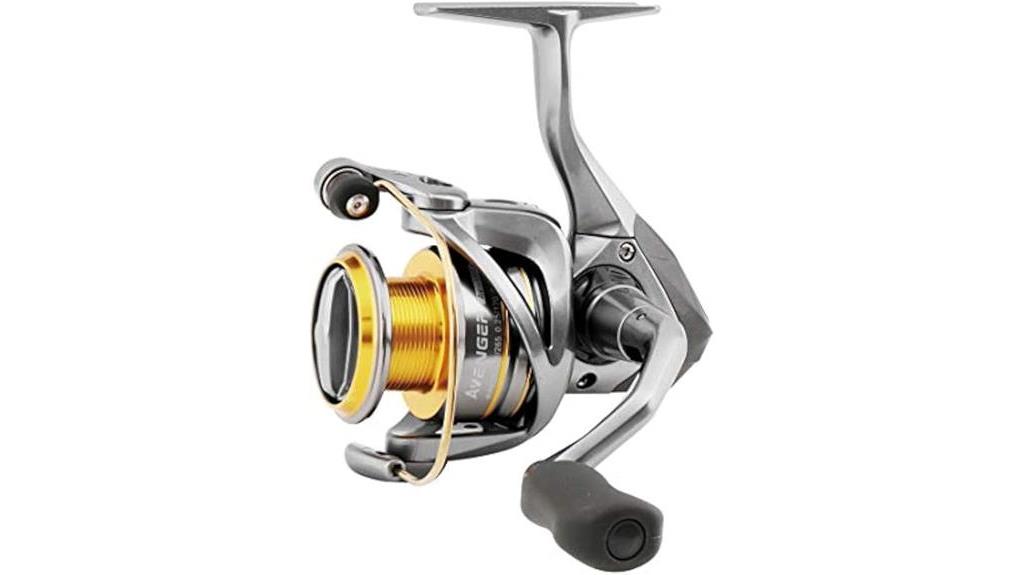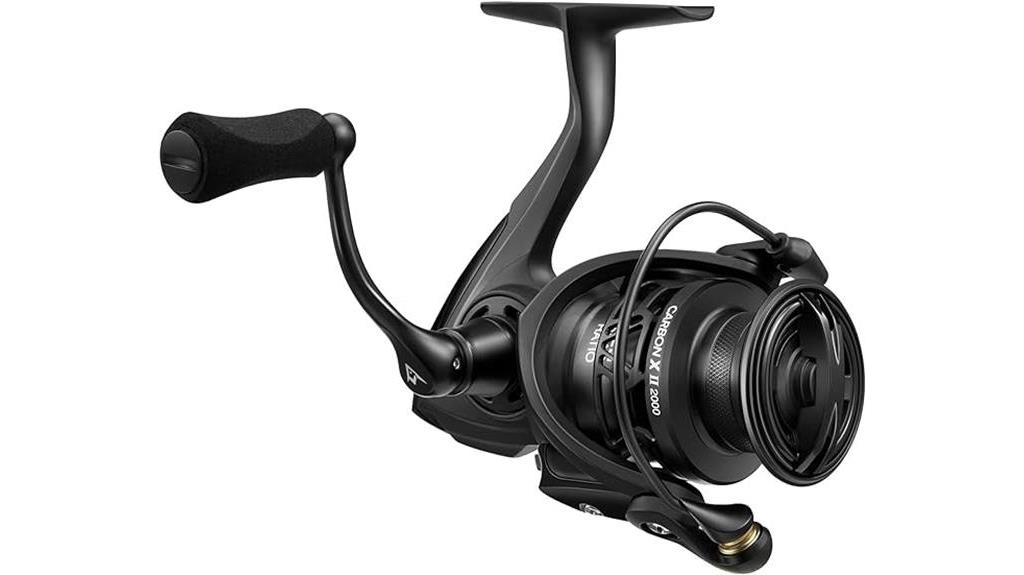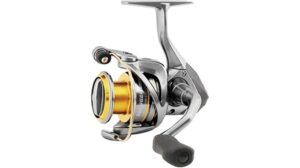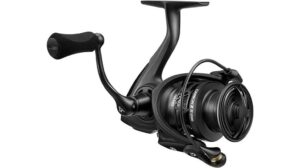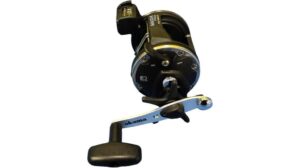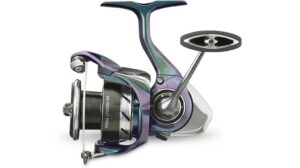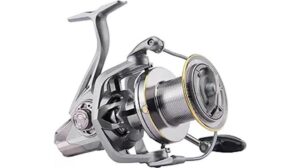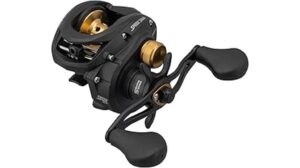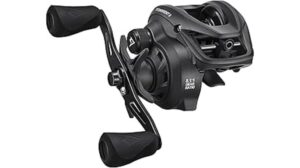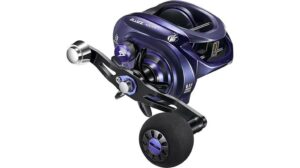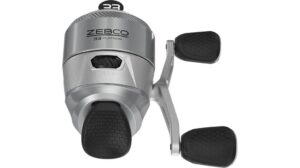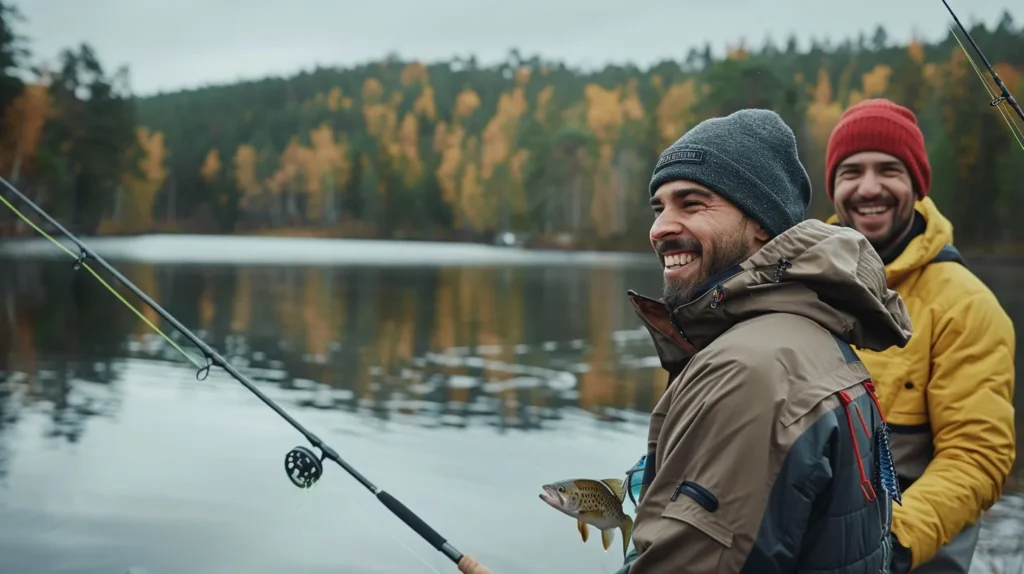We've found that night fishing for bass can be incredibly rewarding with the right techniques. Choosing the proper gear, like medium-heavy rods and low-visibility lines, is essential. We focus on prime spots such as docks, points, and weed beds, where bass tend to hunt after dark. Our lure selection includes dark-colored soft plastics and noisy topwater baits to entice aggressive strikes. We've mastered silent approaches and pay attention to moon phases and weather conditions for best results. Safety is paramount, so we always wear life jackets and use proper lighting. By understanding seasonal patterns and practicing responsible catch-and-release, we've enhanced our nocturnal bass fishing success. Dive deeper to access the full potential of your nighttime angling adventures.
Choosing the Right Gear
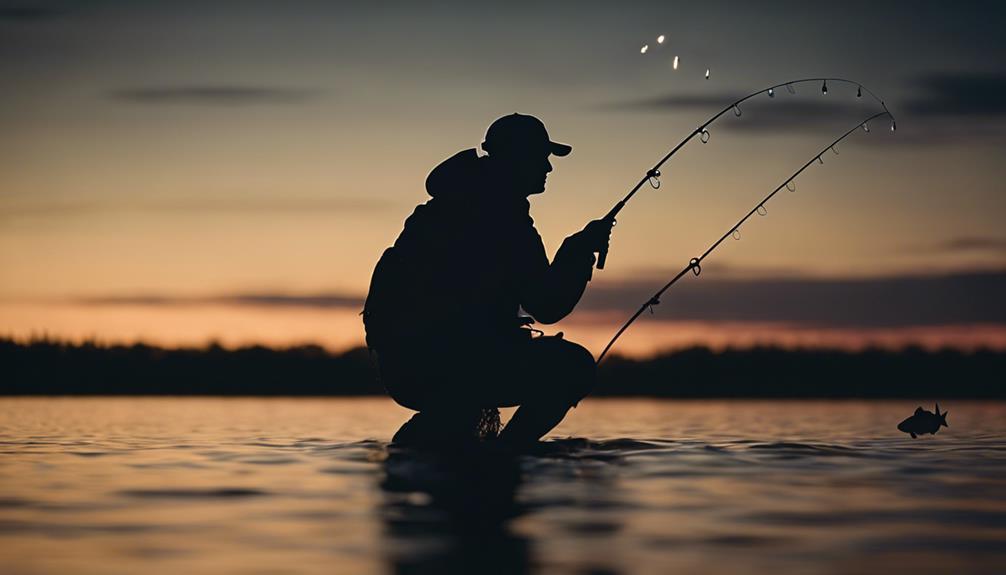
For successful night fishing, selecting the appropriate gear is essential to your angling success. We've found that a medium-heavy rod paired with a baitcasting reel offers ideal control in the dark. Opt for low-visibility line, like fluorocarbon, to remain stealthy. Don't forget a reliable headlamp with red light mode to preserve your night vision. These tools will considerably enhance our chances of landing those elusive nocturnal bass.
Selecting Prime Fishing Spots
Locating prime fishing spots is essential for a successful night bass fishing expedition, as these nocturnal predators tend to congregate in specific areas after dark. We'll explore key locations where bass are likely to hunt during nighttime hours. Let's examine some prime spots and their characteristics:
| Location | Characteristics |
|---|---|
| Docks | Structure, shade |
| Points | Depth changes |
| Weed beds | Cover, oxygen |
| Drop-offs | Ambush points |
| Shorelines | Shallow feeding |
Lure Types for Night Bass

Selecting the right lures for night bass fishing can make all the difference between a successful outing and a frustrating experience. We've found that dark-colored soft plastics, like worms or jigs, are particularly effective. They create a distinct silhouette against the night sky, attracting hungry bass. Noisy topwater lures also work wonders, as they mimic distressed prey and trigger aggressive strikes in the darkness.
Topwater Tactics After Dark
As the sun dips below the horizon, topwater lures become a bass angler's secret weapon, enticing hungry fish to strike with explosive force. We've found that after dark, bass often move to shallower waters, hunting for prey near the surface. By employing a slow, rhythmic retrieve with lures like buzzbaits or poppers, we can mimic struggling baitfish and trigger aggressive strikes from lurking bass.
Mastering Silent Approaches
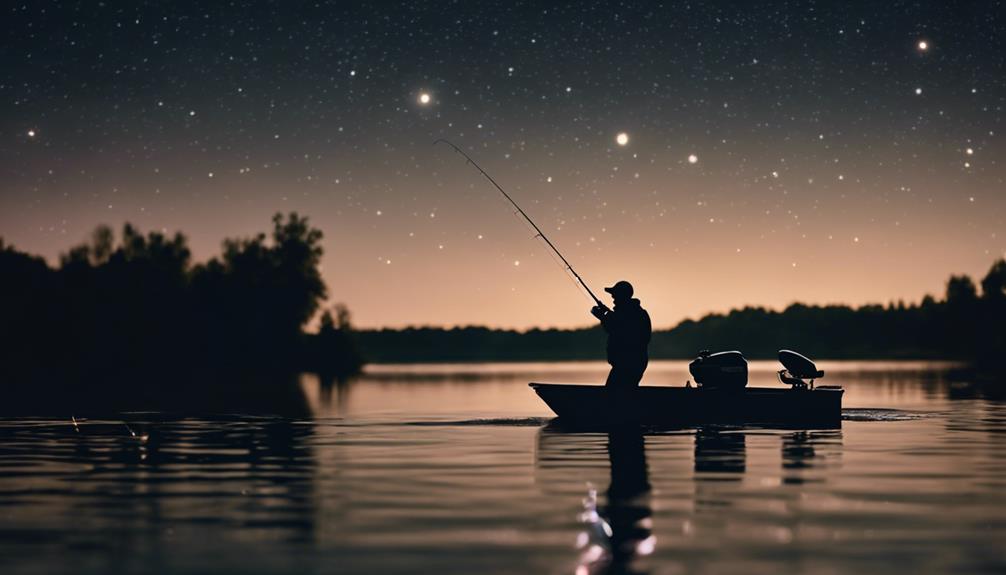
Stealth becomes paramount when approaching bass fishing spots under the cover of darkness. We must move with utmost care, minimizing disturbances in the water and on shore. Our footsteps should be light, our movements deliberate. By employing a slow, methodical approach, we reduce the chances of alerting wary bass to our presence. This silent strategy allows us to position ourselves advantageously for successful casts and strikes.
Reading Underwater Structure
Darkness presents unique challenges when it comes to deciphering underwater structure, but it's an essential skill for successful night bass fishing. We must rely on our other senses and technology to uncover hidden features. Sonar and depth finders become our eyes, revealing submerged logs, drop-offs, and weed beds. By studying these underwater landscapes, we can pinpoint prime bass habitats and increase our chances of a thrilling catch.
Moonphase Influences on Bass
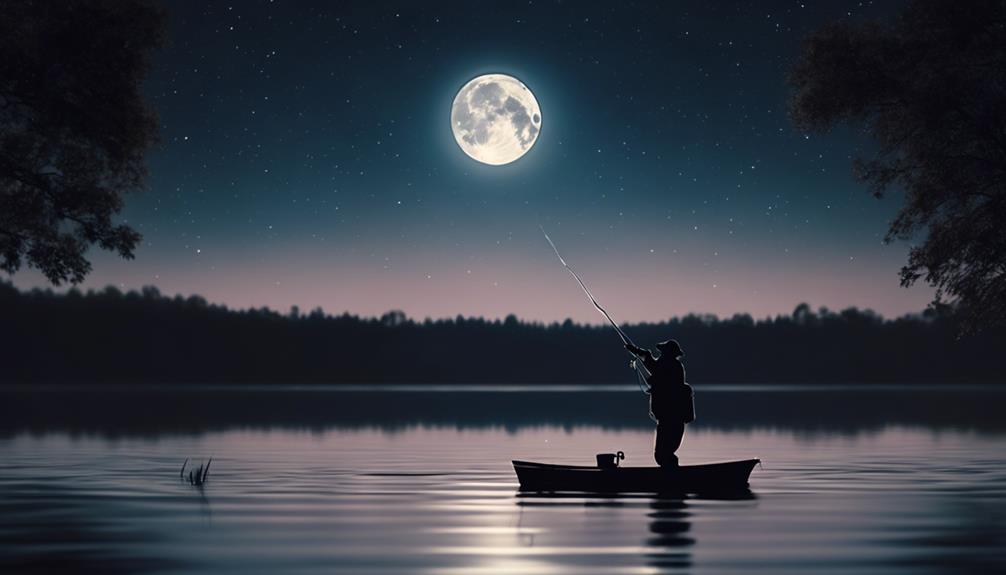
While underwater structure remains a key factor, the moon's cycle plays a notable role in shaping bass behavior and feeding patterns during nighttime fishing expeditions. We've observed that during full moons, bass tend to be more active, often venturing into shallower waters to feed. Conversely, new moons drive them deeper, making them less accessible. Understanding these lunar influences can notably improve our chances of a successful night catch.
Night Vision and Lighting Tips
Proper lighting and enhanced night vision are essential elements for successful bass fishing after dark, dramatically improving both safety and catch rates. We've found that using red-filtered headlamps preserves our natural night vision while illuminating our immediate surroundings. It's vital to let our eyes adjust to the darkness for about 30 minutes before fishing. We also recommend keeping a powerful spotlight handy for maneuvering and spotting potential hazards on the water.
Weather Considerations
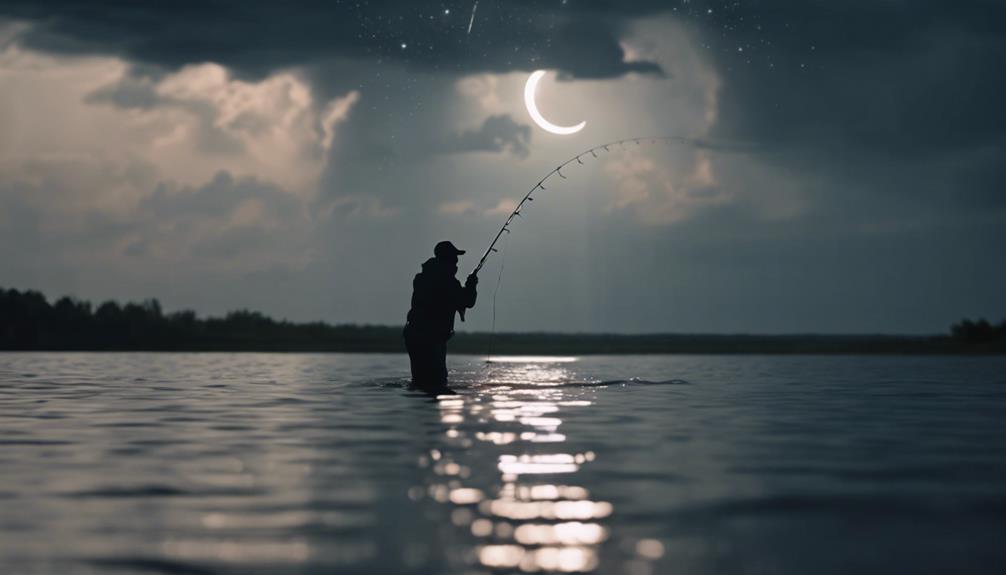
Atmospheric conditions play an essential role in night fishing for bass, influencing both fish behavior and angler comfort. We've found that calm, warm nights often yield the best results, as bass tend to be more active near the surface. However, we shouldn't overlook the potential of light rain or overcast skies, which can trigger feeding frenzies. It's important to monitor barometric pressure, as sudden drops can spark increased bass activity.
Safety Precautions for Night Fishing
Night fishing's allure shouldn't blind us to the heightened risks that come with angling after dark, so we've got to prioritize safety measures to guarantee our nocturnal adventures remain enjoyable and incident-free. Let's focus on three essential precautions:
- Always wear a life jacket, even when fishing from shore
- Bring multiple light sources, including headlamps and lanterns
- Inform someone of our fishing location and expected return time
Seasonal Patterns for Nocturnal Bass
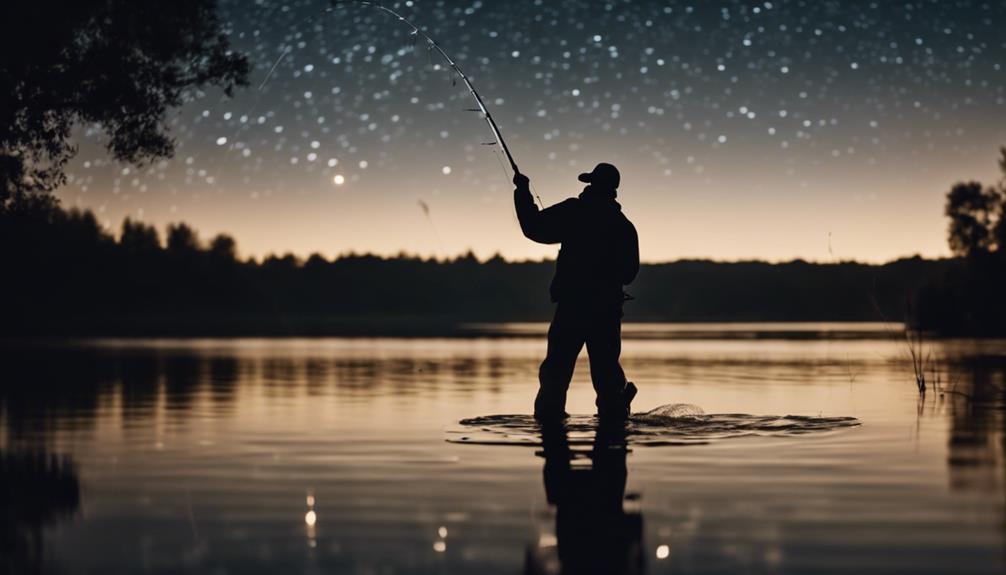
Now that we've covered safety, let's explore how bass behavior changes throughout the year during nighttime hours, shaping our approach to after-dark angling. We'll investigate the intimate world of nocturnal bass, uncovering their seasonal patterns and preferences. Understanding these shifts allows us to adapt our techniques, from lure selection to presentation, ensuring we're in sync with their natural rhythms and maximizing our chances of a successful nighttime catch.
Catch and Release at Night
Practicing responsible catch and release techniques becomes even more essential when bass fishing after dark, requiring extra care and attention to secure the well-being of our finned quarry. We must prioritize the fish's safety and minimize stress during nighttime releases. To guarantee successful catch and release after sunset:
- Use red lights to preserve our night vision and reduce fish disorientation
- Wet our hands before handling to protect the bass's protective slime coat
- Quickly remove hooks and return the fish to water, supporting its body horizontally
Conclusion
We've shared our hard-earned wisdom on night fishing for bass, from gear selection to seasonal patterns. Armed with these techniques, you're well-equipped to tackle the challenges of nocturnal angling. Remember, success lies in adaptability and patience. As you apply these methods, you'll certainly develop your own unique strategies. The thrill of landing a massive bass in the dark is unparalleled, and we're confident you'll soon experience that rush firsthand. Tight lines and safe fishing!
